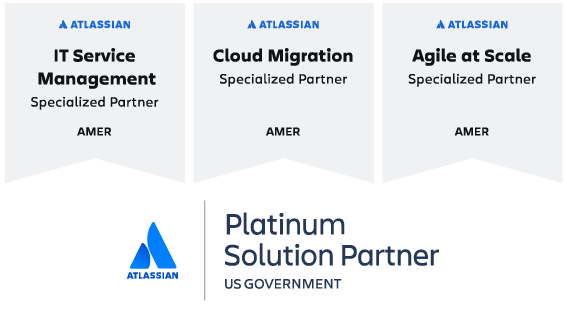 As you explore Atlassian tools, you might notice the distinction between Compass and Backstage isn’t immediately obvious.
As you explore Atlassian tools, you might notice the distinction between Compass and Backstage isn’t immediately obvious.
However, as you investigate their functionalities, you'll uncover nuanced differences that can significantly impact your team's efficiency. Delving into these platforms' intricacies will give you a deeper understanding of how they cater to distinct organizational needs.
Key takeaways
- Compass focuses on team productivity and collaboration.
- Backstage centralizes developer tools and services.
- Evaluate tools based on organizational needs and workflows.
- Consider integration, search functionality, and team collaboration.
- Tailor decisions to fit unique organizational requirements.
Atlassian Compass vs. Backstage
Streamlining operations in large IT departments is becoming increasingly important as organizations aim for efficiency and effectiveness in their software development processes. With the ever-growing complexity of the software development lifecycle, the need for tools that can simplify and optimize operations has become paramount. This is where Atlassian's dual offerings, Compass and Backstage, come into play.
Atlassian Compass, designed for developers on Atlassian Cloud, offers a user-friendly interface to streamline workflows and enhance collaboration. Backstage provides a centralized platform for managing the entire software development lifecycle, from planning to deployment.
This article aims to provide an informed comparison of Atlassian Compass and Backstage, highlighting the strengths of both tools. By understanding the unique features and capabilities of each offering, you can make an informed decision on which tool best suits your organization's needs.
Understanding Atlassian's ecosystem
Atlassian is a well-known leader in project management and collaborative software. It offers a suite of tools tailored for teamwork and efficiency.
Compass is a team productivity tool, while Backstage is a platform specifically designed to build developer portals.
Understanding the distinct roles of these tools is essential in choosing the right fit for your operational needs.
What is Atlassian?
Leading the industry in project management and collaborative software, Atlassian offers tools engineered explicitly to enhance organizational teamwork and efficiency. Atlassian's flagship product, Jira Software, is a robust project management tool that allows teams to track tasks, bugs, and issues efficiently.
Bitbucket, another Atlassian offering, is a version control system that enables developers to collaborate on code seamlessly.
Furthermore, Confluence, a powerful team collaboration tool, allows teams to create, share, and collaborate on documents, ideas, and projects in one centralized location.
Atlassian's suite of tools is designed to streamline communication, enhance productivity, and foster collaboration among team members. By combining Jira Software, Bitbucket, and Confluence, organizations can create a cohesive and efficient workflow that promotes teamwork and drives success.
With Atlassian's tools, teams can work together seamlessly, share knowledge effectively, and easily achieve their project goals.
The role of Compass and Backstage
Selecting the appropriate tool for specific operational needs within Atlassian's ecosystem is essential for optimizing team productivity and efficiency. Atlassian Compass is a team productivity tool that offers a centralized platform for collaboration, project management, and communication. It streamlines workflows, enhances visibility across projects, and fosters seamless teamwork.
Backstage is an essential platform for building developer portals within the Atlassian ecosystem. It provides developers with a unified space to manage services, tools, and documentation, ultimately simplifying the development process and increasing efficiency.
When deciding between Atlassian Compass and Backstage, it's essential to consider your team's unique requirements and operational goals. Choosing the right tool tailored to your specific needs can significantly impact productivity and overall success. By understanding the distinct functionalities of Compass and Backstage, you can make an informed decision that aligns with your team's workflow and maximizes efficiency.
Feature comparison: Compass vs. Backstage
When comparing Atlassian Compass and Backstage, you'll find clear distinctions in their user experience and interface, focusing on intuitive design and customization capabilities.
Collaboration and communication tools stand out with Compass's integration with Atlassian's suite and Backstage's emphasis on real-time collaboration features.
Operational streamlining is key, with both platforms offering tools for project tracking, automation, and enhanced visibility into resources and projects.
1. User experience and interface
Compare the user experience and interface of Atlassian Compass and Backstage, focusing on their intuitive design for team collaboration, features enhancing user engagement like dashboards and notifications, developer-centric interface for tech-savvy teams, and customization capabilities for tailoring the organizational experience.
Atlassian Compass offers a developer-centric interface that caters to tech-savvy teams and deep-focuses on developer workflows and integrations. The platform ensures user engagement through customizable dashboards and notifications, keeping teams informed and connected. Additionally, Compass provides extensive customization capabilities, allowing organizations to tailor the tool to their specific needs enhancing the overall user experience.
At the same time, Backstage also prioritizes a developer-centric approach, providing a seamless interface for technical teams to collaborate efficiently. It offers user engagement features such as interactive dashboards and notifications, fostering team collaboration. Backstage further enables organizations to customize the platform to suit their unique requirements, ensuring a personalized and productive user experience.
| Features | Atlassian Compass | Backstage |
| Developer-centric Interface | Yes | Yes |
| User Engagement Features | Customizable dashboards, notifications | Interactive dashboards, notifications |
| Customization Capabilities | Extensive customization options for tailoring the experience | Customizable to suit organizational requirements |
2. Collaboration and communication tools
Atlassian Compass offers seamless integration with API catalogs, allowing enhanced teamwork through streamlined access to various services and functionalities. Shared spaces in Compass enable real-time collaboration, providing a centralized hub for team members to work together efficiently. Additionally, Compass facilitates cross-team collaboration with its communicative features, fostering improved communication and coordination across different departments or projects.
Backstage also excels in integrating Atlassian tools like Jira and Confluence, ensuring a smooth workflow for users familiar with these platforms. Its shared spaces feature promotes real-time collaboration, enabling teams to collaborate effectively on projects. Besides, Backstage's integration with API catalogs enhances teamwork by offering access to a wide range of plugins and tools to streamline operations further and boost productivity.
3. Operational streamlining
Maximize project efficiency and accountability by leveraging the operational streamlining tools offered by Atlassian Compass and Backstage. These platforms are designed to enhance agile development practices, ensuring a seamless experience for developers while streamlining operations for maximum productivity.
Atlassian Compass provides tools for tracking project progress and fostering accountability through automated reporting features that save valuable time. Developers can streamline their operations by integrating plugins and ecosystem integrations and gain improved visibility into projects and available resources.
Backstage offers similar capabilities, allowing teams to easily monitor project milestones, generate reports, and collaborate effectively. Focusing on enhancing the developer experience, Backstage's tools are tailored to support agile development methodologies and optimize project workflows.
Compass and Backstage provide thorough solutions for operational streamlining, empowering teams to work more efficiently and effectively while maintaining a high level of accountability throughout the development process.
Use cases: When to choose which tool
When deciding between Atlassian Compass and Backstage, consider your role and your team's specific needs. Project Management Leads may benefit from Compass's focus on team productivity and project visibility, while IT Department Heads might find Backstage more suitable for developer collaboration and operational efficiency.
Additionally, for Fortune 1000 Companies looking to scale operations, integrating both tools could provide a holistic solution tailored to large organizational contexts.
1. For project management leads
Project Management Leads can use Atlassian Compass to streamline team collaboration, boost efficiency, and effectively navigate complex project landscapes.
Atlassian T5 Compass gives you a robust platform that empowers you to manage intricate projects easily.
When dealing with multifaceted tasks that require meticulous planning and execution, Compass shines by offering a centralized hub for all project-related information.
This tool enhances team productivity by providing real-time visibility into project progress, task assignments, and deadlines.
Project Management Leads can efficiently allocate resources, track milestones, and address bottlenecks promptly, ensuring projects stay on track.
Additionally, Compass aids in fostering collaboration among team members, facilitating seamless communication, and promoting transparency.
By utilizing Compass, you can streamline workflows, enhance decision-making processes, and ultimately drive successful project outcomes.
When faced with the challenge of managing complex projects, Atlassian Compass emerges as a reliable ally for Project Management Leads seeking to navigate the project management landscape confidently and efficiently.
2. For IT department heads
Consider the advantages Backstage offers developers and IT teams and insights from successful implementations in large organizations.
Backstage is a robust developer experience platform designed to greatly improve developer experience by centralizing all tools, services, and documentation in one place. It streamlines workflows, enhances collaboration, and boosts productivity by providing a unified interface for developers to access everything they need efficiently.
Large organizations like Spotify and Airbnb have successfully implemented Backstage, showcasing its effectiveness in scaling operations and simplifying complex IT environments. By leveraging Backstage, IT department heads can empower their teams to work more cohesively, reduce duplication of efforts, and accelerate software development cycles.
The platform's customizable nature allows organizations to tailor it to their needs, ensuring a seamless integration into existing workflows. Embracing Backstage can lead to tangible improvements in developer efficiency, code quality, and overall IT operations within the organization.
3. Scaling operations in Fortune 1000 companies
Understanding how to integrate Atlassian Compass and Backstage is essential to scale operations in Fortune 1000 companies and optimize developer experiences. By combining the strengths of Atlassian Compass in project management and Backstage in developer experience orchestration, companies can streamline their operations and enhance collaboration across teams. Below is a comparison table highlighting the key features and benefits of each tool in the context of scaling operations:
| Aspect | Atlassian Compass | Backstage |
| Project Management | Helps in tracking tasks and timelines efficiently | Streamlines developer workflows and improves productivity |
| Integration Capabilities | Integrates well with other Atlassian products | Offers a wide range of integrations with popular tools |
| Customization Options | Provides robust customization for diverse project needs | Allows for tailored developer experience setups |
Successful examples of companies that have effectively combined Atlassian Compass and Backstage include large enterprises like Company X and Company Y, where the seamless integration of these tools has led to increased operational efficiency and improved developer satisfaction. Choosing the right tool for specific use cases within Fortune 1000 companies can significantly impact overall performance and productivity.
Implementing Atlassian tools: Tips for success
When implementing Atlassian tools like Compass or Backstage, remember to establish clear goals that align with your business objectives.
To empower your team, guarantee successful adoption by investing in proper training and onboarding processes.
Lastly, focus on continuous improvement through feedback loops and defining metrics for measuring success and adapting as needed.
1. Establishing goals
How can you guarantee that the objectives are clearly defined before implementing Compass or Backstage and that the tool selection aligns effectively with your business needs? To secure a successful implementation of Atlassian tools, follow these steps:
- Establish clear objectives: Define specific goals and outcomes you aim to achieve by implementing Compass or Backstage. Consider factors like improving collaboration, increasing efficiency, or enhancing project management.
- Evaluate tool selection: Assess whether Compass or Backstage aligns with your business requirements. Consider factors like scalability, customization options, integration capabilities, and user-friendliness.
- Align with business needs: Ensure the selected tool addresses key pain points within your organization and aligns with your overall business strategy and objectives.
- Involve stakeholders: Collaborate with key stakeholders, including team members using the tool, to gather insights and ensure their needs are considered during the selection process.
2. Training and onboarding
Establishing clear objectives and aligning tool selection with your business needs are essential steps for successfully implementing Atlassian Compass or Backstage; moving forward, let's focus on the importance of user adoption and providing proper training sessions. Training and onboarding play a critical role in effectively utilizing these tools within your organization. Investing in thorough training sessions can enhance user adoption, accelerate productivity, and foster a strong community of Atlassian users.
To illustrate the significance of training and onboarding, let's look at some best practices from companies that excelled in this area:
| Best Practice | Description | Source |
| Utilizing Atlassian T5 Compass | Leveraging Atlassian's T5 Compass for structured training modules and resources | Atlassian Website |
| Community Engagement | Encouraging active participation in the Atlassian community for continuous learning and support | Industry Forums |
| Sharing Success Stories | Showcasing how other companies successfully onboarded users to inspire and guide your team | Case Studies |
3. Continuous improvement
To enhance the effectiveness of Atlassian Compass and Backstage within your organization, continually leverage feedback loops to improve tool usage over time. By integrating best practices and reducing cognitive load, you can guarantee a seamless experience for your team.
Here's how you can achieve continuous improvement:
- Regular feedback collection: Gather user feedback on their experience with the tools to identify areas for enhancement.
- Iterative updates: Implement regular updates based on feedback to address any usability issues and optimize tool performance.
- Performance metrics: Establish metrics to track the success of tool usage and adapt strategies based on the data collected.
- User training: Provide ongoing training sessions to keep users informed of new features and best practices and ensure efficient tool utilization.
Compass vs. Backstage
In conclusion, both Atlassian Compass and Backstage offer unique benefits and features that cater to different needs and preferences in software development teams. Atlassian Compass enhances the developer experience, helping streamline processes and improving collaboration. It also emphasizes implementing best practices at scale, ensuring efficiency across large teams and projects.
Backstage provides a centralized platform for managing all aspects of software development, from project tracking to service discovery.
As you weigh the strengths of both Compass and Backstage, remember to tailor your decision to your organization's unique needs for the best effectiveness in enhancing operational efficiency.
Here are some key points to take into account:
- Best Practices at Scale: Evaluate how each tool supports your organization's growth and adaptability to changing demands.
- Reduce Context Switching: Consider how seamlessly each tool integrates with your existing workflows to minimize disruptions and increase productivity.
- Save Time Searching: Assess Compass and Backstage's search functionality to determine which streamlines information retrieval more efficiently.
- Enhanced Collaboration: Reflect on how each tool fosters team collaboration, enabling smoother communication and project management.
Sign up to receive more great content
Learn more about Atlassian and how Isos can help by signing up to receive our latest blogs, eBooks, whitepapers and more.














